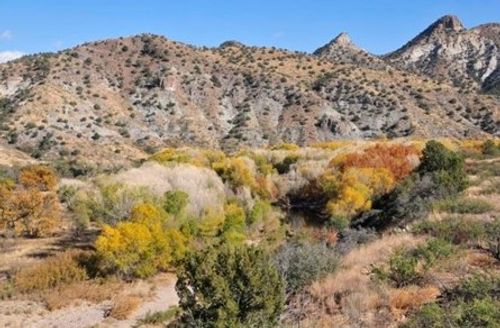
SWAP Habitat
Southwest Riparian Forest
NVC Name
Southwest Riparian Forest (M036)
SWAP General Vegetation Type
RIPARIAN WOODLANDS and WETLANDS
Southwest Riparian Forest [M036] is a lowland riverine riparian habitat found along larger, lower gradient streams and rivers and occasionally in spring-fed depressions along canyon waterways. It is found mostly in the Chihuahuan Desert and Arizona/New Mexico Mountains ecoregions. Broad-leaved deciduous trees dominate. Fremont cottonwood (Populus fremontii) and Rio Grande cottonwood (P. deltoides var. wislizenii) are diagnostic, along with Arizona sycamore (Platanus wrightii), netleaf hackberry (Celtis laevigata), velvet ash (Fraxinus velutina), Arizona walnut (Juglans major), and Goodding’s willow (Salix gooddingii). Coyote willows (Salix exigua) and seepwillows (Baccharis spp.) can be common in the understory, but grasses and forbs tend to be scattered and can include Torrey rush (Juncus torreyi), knotgrass (Paspalum distichum), alkali muhly (Muhlenbergia asperifolia), western water hemlock (Cicuta douglasii), and smooth horsetail (Equisetum laevigatum). Graminoid exotics can dominate including creeping bentgrass (Agrostis stolonifera), barnyard grass (Echinochloa crus-galli), and annual rabbitsfoot grass (Polypogon monspeliensis).
Most of the dominant woody species are phreatophytes and require the presence of a seasonally shallow water table. The stream gradients are low to moderate (0.3% on average), and channel substrates tend to be sands and gravels. Typically, it occurs on bars and terraces along channels that are flooded every 1 to 25 years. Soils are moist and well-drained but weakly-developed entisols that are either sandy throughout or sandy underlain by a gravelly matrix. They tend to be dry on the surface most of the year, but are moist within the rooting zone of most species, particularly during spring runoff.
